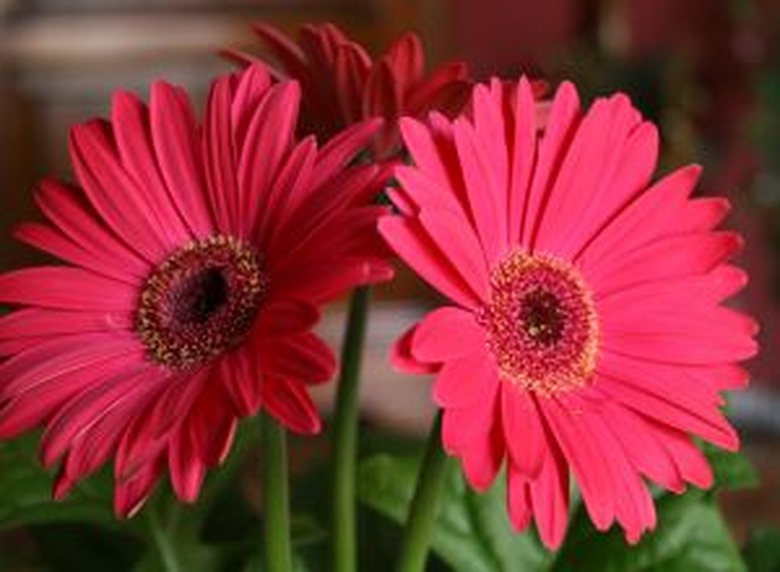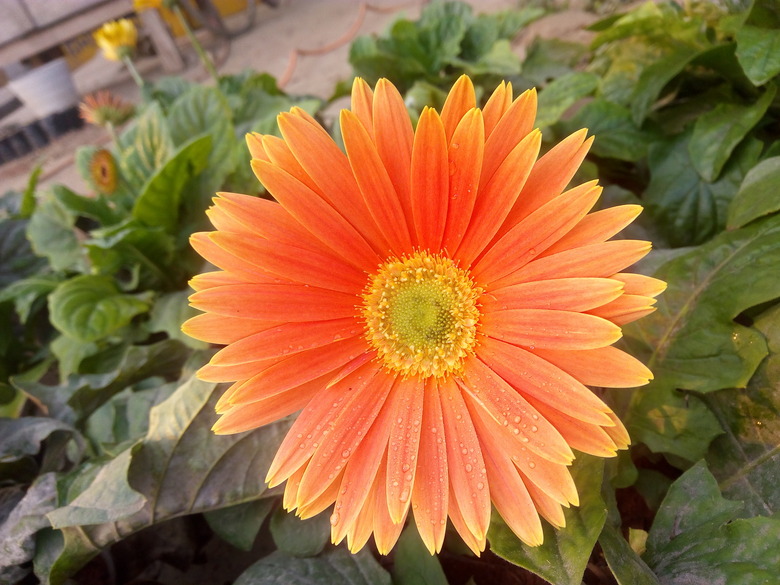How To Care For Potted Gerbera Daisies
Also known as the Transvaal daisy and the Barberton daisy, the gerbera daisy (Gerbera jamesonii) belongs to the aster family and is native to South Africa. Gerbera flowers are large and cheery and come in a variety of colors, which makes them one of the most popular types of cut flowers. They bloom in summer and fall.
Gerbera daisies are hardy in USDA hardiness zones 8 to 10. They are tender perennials often grown as annuals. These daisies can be grown in garden beds or in containers, either alone or as part of mixed plantings.
Gerbera Daisies in Pots Outside
In its hardiness range, daisies can be grown in the ground and protected with mulch during the winter. If your intention is to overwinter gerbera daisies indoors after the growing season, however, it is best to grow them in pots, as a long taproot makes these plants difficult to transplant.
Tip
Gerbera daisies grown as perennials are best planted in pots, as this species does not respond well to transplanting.
If you want to create the illusion that the plants are grown in the ground, you can bury the pot so that the brim is even with the soil level. Choose containers with drainage holes.
**Gerbera daisies like full sun but not excessive heat.** Therefore, they appreciate afternoon shade. For this reason, it is also best to avoid dark-colored containers that trap heat. Keep them away from brick walls and concrete surfaces.
To avoid fungal diseases, like powdery mildew, be sure to give your gerbera daisy plants good air circulation.
Overwintering Gerbera Daisies in Pots
Indoors during the winter, gerbera daisy plants should be kept in a cool room at temperatures between 45 and 50°F. Provide minimal moisture, allowing the soil to almost dry out between waterings. Place the potted plant where it will receive plenty of sunlight.
Caring for Gerbera Daisies
Gerbera daisies are considered low-maintenance plants. Let's go over how to care for them.
Pruning
Deadhead gerbera daisies to keep the plants looking neat. Trimming back the stems and leaves can help to promote reblooming.
Watering
Whether grown in the ground or in containers, it is imperative that you plant gerbera daisy plants in well-draining soil. Root rot and stem root may occur in soils that retain too much moisture.
Watering plants early in the day so that they have time to dry before nightfall can help prevent diseases.
Tip
Gerbera daisies that are overwatered or grown in poor-draining soil may succumb to root rot.
Fertilizing
Gerbera daisies benefit from fertilizer. A liquid fertilizer every two weeks is adequate. Gerbera daisies grown in potting soil tend to be deficient in micronutrients, such as iron and manganese. Applying a granular or foliar spray can help avoid this problem.
Pest Control
Gerbera daisies can become infested with a number of pests, including whiteflies, thrips, aphids and mites. These insects feed on plant sap. Their feeding can cause gerbera daisy leaves to turn yellow.
Neem oil and insecticidal soaps can be used to keep these pests in check; however, it is important to exercise caution, as using these products on gerbera daisies planted in full sun and during hot summer weather can burn the plants.

